The following illustrated
history of the American Hockey League and early professional hockey in
Philadelphia was originally written for the AHL 1999 All-Star Game
played at the
CoreStates (now Wachovia) Center in Philadelphia, PA. It was last updated
and expanded in October, 2014.
A Concise
History of
The American Hockey
League
& Minor League Pro
Hockey
in Philadelphia:
1927 - 2009
by Bruce
"Scoop" Cooper
When the evntual two-time
Calder Cup Champion (1998, 2005) Philadelphia Phantoms
played their first American Hockey League game in October, 1996, they
became the fourth club to represent Gov. William Penn's 'Greene
Countrie
Towne' in the AHL since the Fall of 1936 when the four surviving
member clubs
of the then decade old Canadian-American ("Can-Am") Hockey League --
the
Philadelphia Ramblers, New Haven Eagles, Providence Reds, and
Springfield Indians -- first joined forces with the four survivors of
the seven-year old International Hockey League -- the Pittsburgh
Hornets (nee Shamrocks), Cleveland Barons (nee Falcons), Buffalo Bisons,
and Syracuse Stars. After playing a makeshift interlocking
"schedule of convenience" for two years, seven of these clubs
(Buffalo had folded in December, 1936 when the roof of their rink collapsed after a blizzard) and the
then three-time defending Eastern Amateur Hockey League
champion Hershey Bears Hockey Club formally organized themselves into a new
International-American Hockey
League (renamed the American Hockey League in 1940) at
a meeting in New York City on June 28, 1938.
And that
still flourishing circuit -- considered by many to be second only in
the
world
to the NHL -- has now been bringing outstanding professional hockey to
its
millions of fans ever since without interruption.
The now almost 90-year history of pro hockey in
Philadelphia has often been one of stark contrasts. To
be sure, over
the past almost half century Philadelphia has been home to many
truly great hockey exploits -- the NHL Flyers' frequent regular season
Division
and conference titles, eifght post season trips to the finals, and two
Stanley Cups,
their incredible defeat of the Soviet Central Red Army team in 1976,
the
unprecedented 35-game unbeaten streak in 1979-80, the great Hall of
Fame playing careers of Bob Clarke, Bernie Parent, and
Bill Barber, and, of course, the consistent success of the Phantoms between 1996 and 2009 -- especially their AHL record
17-game winning streak in 2004-2005 and
their two marvelous Calder Cup seasons. With a few
exceptions, however, the history of the
game's earlier years in Philadelphia was a much less successful -- but
no
less
interesting -- story.
***
The
Philadelphia Arrows
(Canadian-American Hockey League)
1927-35
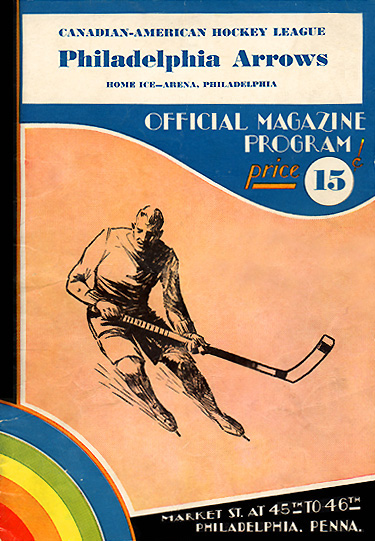 Professional
ice hockey first came to
Philadelphia in the Fall of 1927 when the nascent Philadelphia Arrows
first took to the ice at the Philadelphia Arena
on Market Street between 45th & 46th Streets in West Philadelphia
to
become the sixth member of the then year old Canadian-American
("Can-Am") Hockey
League. (Originally known as the "Philadelphia
Auditorium and Ice Palace" when it first opened its
doors in February, 1920, the
5,000-seat Arena was all but supplanted as an indoor sports venue with
the opening of the Spectrum in South
Philadelphia in September, 1967, and was eventually destroyed by fire
on August 24, 1983.
Professional
ice hockey first came to
Philadelphia in the Fall of 1927 when the nascent Philadelphia Arrows
first took to the ice at the Philadelphia Arena
on Market Street between 45th & 46th Streets in West Philadelphia
to
become the sixth member of the then year old Canadian-American
("Can-Am") Hockey
League. (Originally known as the "Philadelphia
Auditorium and Ice Palace" when it first opened its
doors in February, 1920, the
5,000-seat Arena was all but supplanted as an indoor sports venue with
the opening of the Spectrum in South
Philadelphia in September, 1967, and was eventually destroyed by fire
on August 24, 1983.  The first formal
sporting event in the building was
a college hockey game played on Saturday,
February 14, 1920, in which Yale shut-out
Princeton, 4-0.) Although
the city's first pro hockey club
finished dead last that season with a 13-25-2
record,
by 1932-33
the Arrows had brought the city its first ever regular
season hockey title with an impressive 29-12-7
mark. (The 1933 Can-Am
play-off crown, however, went to the Boston
Cubs.) In 1935-36
the team was renamed the Ramblers when it
became
the top farm club of the New York Rangers (see below).
The first formal
sporting event in the building was
a college hockey game played on Saturday,
February 14, 1920, in which Yale shut-out
Princeton, 4-0.) Although
the city's first pro hockey club
finished dead last that season with a 13-25-2
record,
by 1932-33
the Arrows had brought the city its first ever regular
season hockey title with an impressive 29-12-7
mark. (The 1933 Can-Am
play-off crown, however, went to the Boston
Cubs.) In 1935-36
the team was renamed the Ramblers when it
became
the top farm club of the New York Rangers (see below).
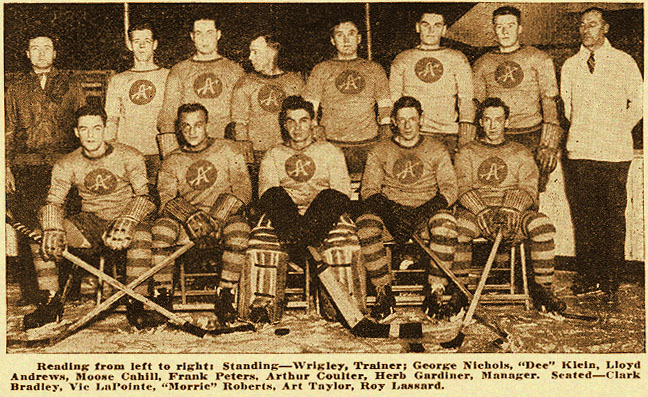
Philadelphia's First Pro Hockey Team - The
Philadelphia Arrows
Among the notable players to appear in
Arrows' livery were defenseman Tommy
Anderson who went on to win the
NHL's Hart Trophy (MVP) in 1941-42 with the Brooklyn Americans during
an eight year NHL career, former Toronto St. Pats' winger Lloyd
"Shrimp" Andrews, future longtime Chicago Black Hawk and New York
Ranger blueliner Arthur
Coulter, and New York Ranger goalie Dave
Kerr.
The
Philadelphia Quakers
(National Hockey League)
1930-31
It
should be noted here that Philadelphia
also got a brief -- albeit disastrous -- first taste of major league hockey
during this era when it hosted a National Hockey League
club for one desultory campaign. The NHL's
then doormat Pittsburgh
Pirates pulled up stakes in the Steel City after
the 1929-30 season and moved 300 miles east to
share the Arrows' home ice at the Arena where they
would operate as the Philadelphia Quakers for the 1930-31 season. The
club -- which like
the current NHL Flyers was garbed in orange and
black
-- was coached by J. Cooper Smeaton
who
thirty years later would be elected to the Hockey Hall of Fame in his
far more accustomed rôle as a an NHL referee. Among the
young Quakers' skaters in 1930-31 was another future Hall of Famer in
19-year old rookie
center Syd Howe.
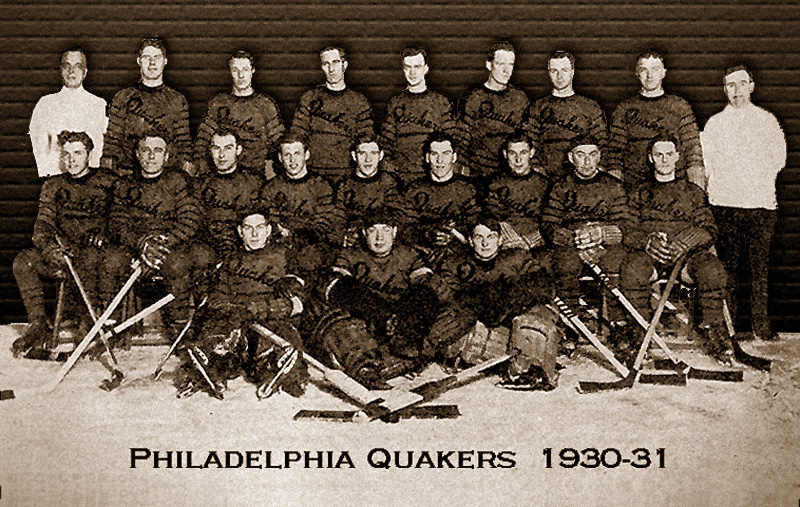
Philadelphia's First
NHL Team
Unfortunately the only "fame"
Smeaton's
ill-fated skating six would garner in Philadelphia, however, was an NHL
single season record
for futility which still stands today
three-quarters of a century
later! As the
Pirates in Pittsburgh in 1929-30
the woeful club had won just five of
its
44-games (5-36-3).
As
the Quakers in Philadelphia in 1930-31,
however, they were even worse
compiling a
record
of 4-36-4
-- still the fewest games ever won in a season by an NHL
club. Not
surprisingly the Quakers quietly suspended operations after that
single dreadful campaign to again leave the Can-Am League as
Philadelphia's exclusive purveyor of shinny for the 1931-32 season.
(The Quakers' dormant NHL franchise was finally canceled
in 1936.)
Philadelphia's First Hockey Hall of Famers
|
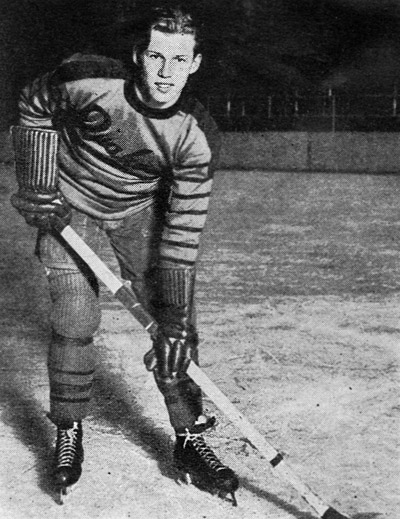
|
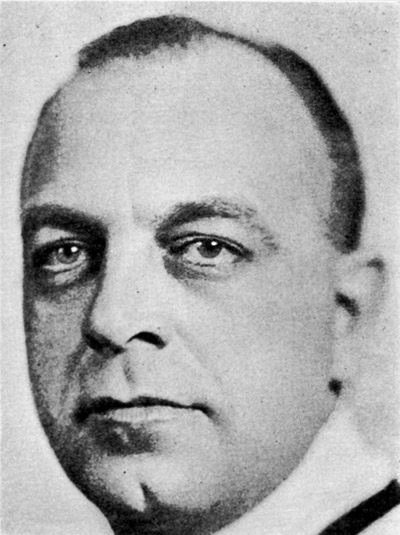
|
Syd Howe
|
J. Cooper Smeaton |
In 1946 a group led by Montreal and Philadelphia sportsman
Len Peto announced plans to put another NHL team in Philadelphia, to
build a $2,500,000 rink to seat 20,000 on the site of the old Baker
Bowl, and to acquire the franchise of the old and dormant Montreal Maroons held by
the Canadian Arena Company, owner of the Montreal Canadiens. When
Peto's group was unable to get the new arena project funded by the
league-imposed deadline, however, the NHL evntually cancelled the
Maroons franchise.
The
Philadelphia Comets
(Tri-State Hockey League)
1932-33
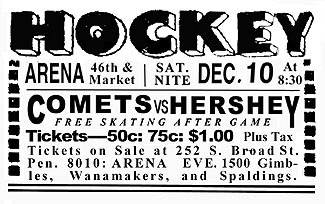 Over a period of just four
months in 1932-33, the
Philadelphia
Comets of the ephemeral Tri-State
Hockey League would
both appear
-- and disappear -- as they
became the
second
short lived hockey club to
share
Philadelphia
Arena ice with the Arrows in three seasons. The forerunner to
the Eastern Amateur Hockey League, the T-SHL operated
for just that one season -- and did so with only four
member clubs: the Comets, Atlantic City Seagulls, Baltimore Orioles,
and
Hershey B'ars. While they also played some games against teams of the
New York
Amateur Hockey League, each team in this
tiniest of possible circuits was
scheduled to play
an 18 game league
slate of six
meetings with each of the other three T-SHL clubs
which the Comets began when they took on Hershey at the Arena on
December 10,
1932. Not
only did the desultory Comets lose that night, but they also dropped every
one of the other 15 league contests they eventually played that season.
With an 0-16-0
record in league play, the Comets
thus
"finished" their one and
only campaign without ever
earning a single league standings point! While the Comet "marksmen"
managed to score just 25 goals in their 16 games, they gave up an
incredible 119 enemy markers for an overall team GAA of 7.44! Atlantic City (15-1-2) and
Baltimore (12-5-1) dominated the
loop while Philadelphia (0-16-0) and Hershey
(6-11-1) provided the cannon fodder. (Presumably all six Hershey
victories came at the expense of the lowly Comets.)
Over a period of just four
months in 1932-33, the
Philadelphia
Comets of the ephemeral Tri-State
Hockey League would
both appear
-- and disappear -- as they
became the
second
short lived hockey club to
share
Philadelphia
Arena ice with the Arrows in three seasons. The forerunner to
the Eastern Amateur Hockey League, the T-SHL operated
for just that one season -- and did so with only four
member clubs: the Comets, Atlantic City Seagulls, Baltimore Orioles,
and
Hershey B'ars. While they also played some games against teams of the
New York
Amateur Hockey League, each team in this
tiniest of possible circuits was
scheduled to play
an 18 game league
slate of six
meetings with each of the other three T-SHL clubs
which the Comets began when they took on Hershey at the Arena on
December 10,
1932. Not
only did the desultory Comets lose that night, but they also dropped every
one of the other 15 league contests they eventually played that season.
With an 0-16-0
record in league play, the Comets
thus
"finished" their one and
only campaign without ever
earning a single league standings point! While the Comet "marksmen"
managed to score just 25 goals in their 16 games, they gave up an
incredible 119 enemy markers for an overall team GAA of 7.44! Atlantic City (15-1-2) and
Baltimore (12-5-1) dominated the
loop while Philadelphia (0-16-0) and Hershey
(6-11-1) provided the cannon fodder. (Presumably all six Hershey
victories came at the expense of the lowly Comets.)
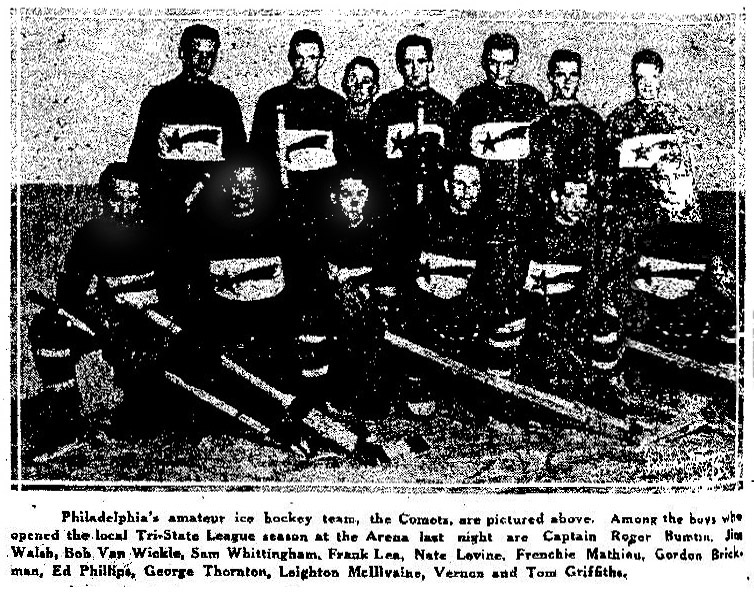 The 1932-33 Philadelphia
Comets
The 1932-33 Philadelphia
Comets
Not surprisingly the woeful Comets drew scant
attention
from either the
local press or the city's hockey fans who were then quite smitten
with the by now well established and increasingly popular now first-place
CAHL
Arrows. Even
with bargain basement Depression era ticket prices of 50 cents to
$1, the
winless
Comets
could not lure more than a handful of Philadelphia's always demanding
sports fans to see them play. Thus, as did the NHL Quakers two
years earlier,
the Comets quietly folded at season's end to become just another
obscure footnote
in Philadelphia hockey history. With the Comets gone, in
1933-34
the Seagulls, Orioles, and B'ars joined up with four venerable and long
standing New York based senior amateur clubs, the Bronx Tigers, New
York Athletic Club, St. Nick's Hockey Club, and Crescent-Hamilton
Athletic Club, to form the new seven-team EAHL,
a league that would go on to operate almost continuously for four
decades. (The EAHL failed to ice any teams only during the 1948-49
and 1953-54
seasons.) When the loop returned to the ice for the 1954-55
campaign it did so with a new name, the Eastern Hockey League, but
after another nineteen seasons the by then twelve
team, three division circuit split up into two new independent
shinny guilds, the six-team Southern
Hockey League and the seven-team North
American Hockey League, which both began play in 1973-74 and folded
in 1977. Over the years Philadelphia would
eventually be represented in the EAHL by the Falcons,
the EHL by the
Ramblers, and the NAHL by the Firebirds.
The
Philadelphia Ramblers
(Can-Am Hockey League (1935-36); International-American Hockey League (1936-40);
American Hockey League (1940-41))
(This
franchise
played as the"Philadelphia
Rockets"in
1941-42, its final season.)
1935-42
Can-Am
League Champions
(Frank Fontaine Cup)
1935-36
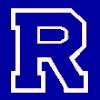 In 1935-36
the seven-year old Can-Am League Arrows were renamed the Ramblers when the franchise
became
the top farm club of the New York Rangers. With a 27-18-3
record
that year it also became the final regular season champion of the stand
alone
C-AHL, but this time they also brought Philadelphia its first ever
professional
hockey play-off title as well when 23-year old goalie Bert Gardiner
shut-out of the Providence Reds on the road, 1-0, on April 7, 1936, to
take the championship series (3-1) and capture the Frank Fontaine Cup.
In 1935-36
the seven-year old Can-Am League Arrows were renamed the Ramblers when the franchise
became
the top farm club of the New York Rangers. With a 27-18-3
record
that year it also became the final regular season champion of the stand
alone
C-AHL, but this time they also brought Philadelphia its first ever
professional
hockey play-off title as well when 23-year old goalie Bert Gardiner
shut-out of the Providence Reds on the road, 1-0, on April 7, 1936, to
take the championship series (3-1) and capture the Frank Fontaine Cup.
In the Fall of 1936, the Ramblers and three other Can-Am League
clubs (Providence, New Haven, and Springfield) joined up with four
remaining clubs of the then seven-year old International Hockey League (née
Canadian Professional Hockey League) -- Buffalo, Syracuse, Pittsburgh,
and Cleveland -- to play an interlocking schedule as an eight-team "circuit of mutual convenience" which styled itself as the "International-American Hockey League."
Just a month into its inaugural 1936-37 campaign, however, membership
in the combined loop fell by one when the Buffalo Bisons unexpectedly
dropped out. (The Bisons had lost their home rink, the lovely Peace
Bridge Arena in nearby Fort Erie, Ontario, the previous March when the
5,000-seat, eight-year old structure's state of the art "Lamella
Trussless" roof unexpected collapsed as the result of a major snow
storm. The club started the 1936-37 season playing out of an arena in
Niagara Falls, Ontario, but it soon became clear that they wouldn't be
able to make a financial go of it in the smaller facility.) The makeshift loop carried on for the rest of
that season (and the next) with just seven clubs.
Under former NHL Chicago Black Hawks' coach Herb
Gardiner,
the
Ramblers continued on as a strong club in 1936-37 finishing the season
with the new combined leagues' best overall record at 26-14-8 led by the
scoring prowess of Clint Smith and Bryan Hextall, Sr., (the grandfather
of future Flyer goalie Ron Hextall) who together accounted for 54 of
Philadelphia's 149 goals. At a meeting held in New York City
on June 28, 1938, the two leagues finally agreed to formally merge and
elected the former Can-Am League's head, Maurice Podoloff of New Haven,
as the first President of the now fully integrated new
International-American Hockey League. (The name of the circuit was
changed to the current American Hockey League in 1940.)
Gardiner's Ramblers
again reigned supreme in the I-AHL's East in 1938-39 on a record of
32-17-5 while the then first-year Hershey Bears (which was brought in
to take Buffalo's spot and bring the league back up to eight teams)
took the regular
season's Western Division with a 31-18-5 mark making the league's two
Pennsylvania-based clubs also the two top in the new circuit. As
might be expected these two rivals also accounted for half of the
members of new league's 1938-39 All-Star squads.
The Ramblers contributed
four players
including a pair of first teamers -- goalie Bert Gardiner who would go
on to appear in 143 games with Montreal, Chicago, and Boston during the
War years, and left winger Kilby MacDonald, the league's third overall
scorer. 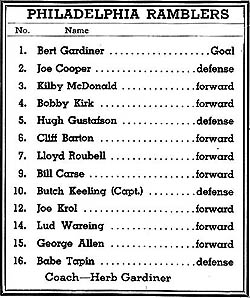 (The next season
MacDonald would be named the NHL's top rookie with
the New York Rangers.) Rambler left wing George Allen -- who
would
go on to an eight-year NHL career with the Rangers, Black Hawks and
Canadiens -- and his linemate, center Billy Carse (the league's number
two scorer behind Pittsburgh's Don Deacon) rounded out Philadelphia's
contingent as both earned second team All-Star berths. The Bears
were represented by a pair of All Stars with defenseman Jeff
Kalbfleisch on the First Team and goalie Alfie Moore backing up
Philadelphia's Gardiner on the second team.
(The next season
MacDonald would be named the NHL's top rookie with
the New York Rangers.) Rambler left wing George Allen -- who
would
go on to an eight-year NHL career with the Rangers, Black Hawks and
Canadiens -- and his linemate, center Billy Carse (the league's number
two scorer behind Pittsburgh's Don Deacon) rounded out Philadelphia's
contingent as both earned second team All-Star berths. The Bears
were represented by a pair of All Stars with defenseman Jeff
Kalbfleisch on the First Team and goalie Alfie Moore backing up
Philadelphia's Gardiner on the second team.
Not surprisingly that
first
Philadelphia-Hershey hockey rivalry was no less intense
than is the one between today's between the Phantoms and Bears. It
began less than two weeks into the 1938-39
season when the Ramblers and Bears met for the first time ever before a
crowd
of 5,000 at the Hershey Sports Arena (now Hershey Park Arena) on
November 17, 1938, with the
Bears emerging victorious, 3-1, on goals by Howie Mackie, Red Hamill
and Wally Kilrea against a single Philadelphia marker by Lude
Waring. Two weeks later Hershey journeyed to Philadelphia for the
first time and the Ramblers were apparently eager for revenge as the
Bears were still the only team to have beaten the powerful Blueshirts
when the chocolate and white stepped on the ice at the Arena in West
Philadelphia for the rematch on November
30th. The Ramblers' earlier loss in Hershey was the only blemish
on
their league leading 8-1-0 record.
While Hershey goalie Alfie
Moore had
held Philadelphia to just one goal in that first match, the Ramblers
treated their home ice crowd of 5,500 to six against the veteran
Bears' netminder to bring the Blueshirts' total to a remarkable 60
goals
in just ten games. 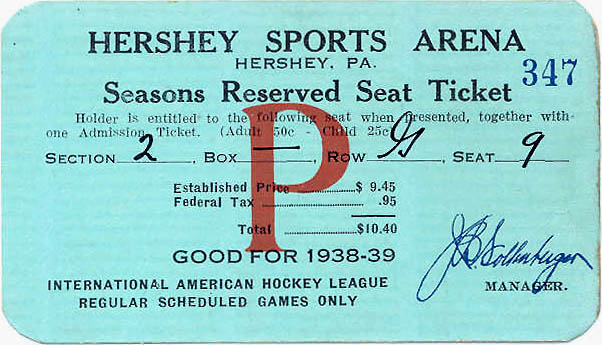 Unfortunately for the Rambler
faithful, however, Hershey's marksmen solved Bert Gardiner an
incredible
nine times on the evening with Wally Kilrea, Deed Klein, Windy Steele
and Jerry Shannon each scoring twice while Terry Reardon collected a
single unassisted marker.
Unfortunately for the Rambler
faithful, however, Hershey's marksmen solved Bert Gardiner an
incredible
nine times on the evening with Wally Kilrea, Deed Klein, Windy Steele
and Jerry Shannon each scoring twice while Terry Reardon collected a
single unassisted marker.
The Bears and Ramblers met
again on January 12th, 1939, when the Blueshirts invaded Hershey
for just the second time. As had been the case with the first two
contests, it was again a meeting between two league powerhouses with
the
Ramblers atop the Eastern Division and the Bears trailing the Cleveland
Barons by two points in the Western Division. This time an SRO
crowd of over 7,500 (including some 600 Rambler faithful who had made
the journey in a chartered 12-car Reading Railroad train) saw Alfie
Moore shut down the Ramblers again by holding the league's highest
scoring
team to just a single goal by Babe Tapin while Hershey's Earle Roche,
Windy Steele, Deed Klein, Red Hamill and Orville Roulston all put the
puck past Bert Gardiner who in just three games had already been solved
by the
Bears for an incredible 17 goals.
Hershey's dominance over
its neighbor
to the East finally ended on February 8th, however, when a then record
crowd of 6,620
in Philadelphia's dank Arena saw them finally defeat the Bears, 4-1, in
a fight filled contest.  The
clubs'
final two regular season meetings of 1938-39 came in a much
anticipated late season home-and-home set which opened in Hershey on
March 9th and
closed in Philadelphia with a return engagement two nights later. While
each team would have three regular season games left with other
clubs after this final set, for all intents and purposes this
home-and-home match up would determine which of these two powerful
clubs
would finish with the best overall record in the league and therefore
get home ice in the crucial best-of-five play-off series that Hershey
and Philadelphia would open against each other less than two weeks
later.
The
clubs'
final two regular season meetings of 1938-39 came in a much
anticipated late season home-and-home set which opened in Hershey on
March 9th and
closed in Philadelphia with a return engagement two nights later. While
each team would have three regular season games left with other
clubs after this final set, for all intents and purposes this
home-and-home match up would determine which of these two powerful
clubs
would finish with the best overall record in the league and therefore
get home ice in the crucial best-of-five play-off series that Hershey
and Philadelphia would open against each other less than two weeks
later.
As in the previous two
meetings at
Hershey, by game's end the Bears had easily whipped the visiting
Blueshirts, 7-3, with the help of a hat trick by Jerry Shannon to pull
within two points of the league leading Ramblers who had been forced to
use former EAHL Hershey Cub netminder Harvey Teno in the contest when
Bert Gardiner
was
felled by the flu. Two nights later, however, Gardiner was back at his
post in front of the Rambler twine at 46th & Market Streets before
an emotional SRO crowd on Saturday night, March 11th, for a classic
contest won by the Ramblers, 2-1, on a third period goal by Kilby
MacDonald. After just six games over five months an intense
rivalry had indeed been born. Over a period just ten more days
between March 21st and 30th, 1939, however, it would be forged white
hot
as the two clubs would then face each other in the play-offs for the
then two-year old Calder Cup.
Had the Bears not been
defeated by
the Ramblers, 2-1, in the final meeting of the season on March 11th,
Hershey would have had home ice for the series with the better overall
record. With that close loss just ten days earlier, however, the
Bears were forced to play their first ever Calder Cup game in the
Ramblers' West Philadelphia lair 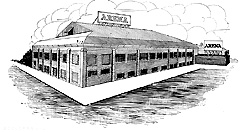 which
went to the Ramblers who were led to victory by rookie
Alf Pike who had just been assigned to the team with but two previous
games of pro experience to replace veteran George Allen who had been
called up to
the Rangers the day before. Pike, who took Allen's spot that night
on
Philadelphia's top line with Billy Carse and Bobby Kirk, responded by
netting a three goal hat trick in an impressive 6-3 Ramblers' win over
the Bears.
which
went to the Ramblers who were led to victory by rookie
Alf Pike who had just been assigned to the team with but two previous
games of pro experience to replace veteran George Allen who had been
called up to
the Rangers the day before. Pike, who took Allen's spot that night
on
Philadelphia's top line with Billy Carse and Bobby Kirk, responded by
netting a three goal hat trick in an impressive 6-3 Ramblers' win over
the Bears.
The Bears evened the series
two
nights later at Hershey, 3-2, defeating sub goalie Havery Teno who had
again replaced Bert Gardiner when the Ramblers' All-Star netminder was
recalled to the Rangers because of an injury to Dave Kerr. The
largest crowd in Philadelphia hockey history to that date -- 6,758 --
packed the Arena for the third game and were treated to a splendid
goaltending duel between Gardiner (who was back for just one game) and
Alfie Moore won by the Ramblers, 2-1, in overtime on a goal by Cliff
Barton 7:14 into sudden death after Lude Waring had tied the game for
the Ramblers at 1-1 with just 3:54 left in regulation time. With
the Ramblers holding a two-games-to-one edge in the series, the Bears
faced elimination if they were to drop game four back in Hershey on
March 28th where they were a perfect four-for-four in meetings with
their rivals from Philadelphia. And as in their first play-off
meeting at the Arena five days earlier the Ramblers would have to play
without goalie Bert Gardiner -- and this time also center Billy Carse
as well -- who were both back
with the New York Rangers to play with the Ramblers' parent club in
their
Stanley Cup series with the Boston Bruins.
Thus for the third time in
less than
three weeks the Ramblers took to the ice in Hershey with Harvey Teno in
net -- and as was the case five days earlier the league's "spare
goaltend"
played well for the Ramblers, but lost by one goal, 4-3, on a late
third
period tally by Wally Kilrea (his second of the game) before an SRO
crowd of almost 8,000. With the Bears' fifth victory over the
Ramblers in Hershey in five tries (three regular season, two play-off),
the series was again tied and returned to Philadelphia for a fifth and
final game on March 30th. And for the fourth time in three weeks
the Ramblers would be facing the Bears without their regular netminder,
Bert Gardiner, but instead their fate would be in the hands of the
beleaguered Harvey Teno who was 0-3 in his three previous games against
Hershey for the Blueshirts.
Teno's fourth try would prove to
be the
charm, however, for the former EAHL Hershey Cub as he shut-out the
Bears,
3-0, in a tight checking game which amazingly had remained a scoreless
tie for almost fifty-five minutes. Kilby MacDonald finally broke
the ice for Philadelphia at 14:40 of the third period followed by Butch
Keeling and Bobby Kirk at 17:02 and 17:32 to earn the Ramblers a berth
in the Calder Cup finals and end Hershey's first AHL season on a losing
note.
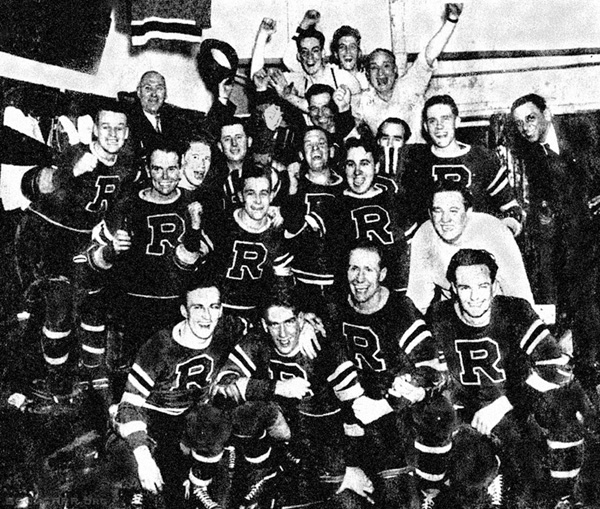
The Philadelphia Ramblers celebrate in their locker room after
defeating
the Hershey Bears in the
1939 Calder Cup Playoffs
The fate of AHL
hockey in neighboring
Philadelphia and
Hershey took
vastly divergent courses after the Eastern Division regular season
champion Ramblers eliminated the Western Division titlist Bears in that
bitter 1939 play-off set. In the almost seven decades since, Hershey
has
never failed to ice a club in the league and has captured the Calder
Cup
eight times. The Ramblers, on the other hand, were not only upset
in their quest for the Calder Cup in the 1939 Finals by the third place
Cleveland Barons, they never again finished higher than dead last in
their division. The end for the Blueshirts' came, in fact, just
three years later when they folded after a final vacuous campaign
in
1941-42 in which the then Danny Cox coached club (playing
that final season as the "Rockets")
won just eleven of its
fifty-six games (11-41-4) to finish its final season with but 26
points.
During the War years the
AHL itself
also struggled as it dropped from ten to seven cities in 1942-43 with
the departure of original member clubs in Philadelphia, Springfield,
and
at mid-season (January 18, 1943), New Haven. Membership dropped
again to just six when the two-year old Washington Lions suspended
operations prior to the 1943-44 campaign. As the nation recovered
from the War years, however, so too did the AHL. In 1945-46 the
circuit was already back up to eight clubs, and in 1946-47 both
Springfield and Philadelphia also returned to the fold.
The
Philadelphia Falcons
(Eastern Amateur Hockey League)
1942-46; 1951
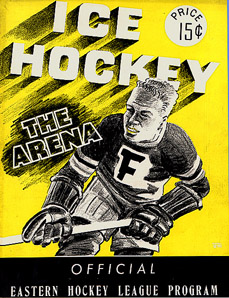
 With the demise
of
the Ramblers, the only hockey in Philadelphia during the War years
was provided by the EAHL Philadelphia Falcons from 1942 to 1946.
With the demise
of
the Ramblers, the only hockey in Philadelphia during the War years
was provided by the EAHL Philadelphia Falcons from 1942 to 1946.
The city went without
hockey until 1951, when its knack for recycling teams took hold again.
The Falcons of the Eastern Amateur Hockey League were reborn, but the
results were disasterous. The 1951-52 Falcons never made it to 1952.
The Falcons were disbanded in December 1951 due to poor attendance; the
team's record was 8-17-0. The final Falcon game was played December 15,
1951 at the Philadelphia Arena before 1,500 fans. The Johnstown Jets
flattened the Falcons, 9-3. The team announced on December 19 that it
would disband, but would play its next two games (versus the
Springfield Indians December 20 and New York Rovers December 22). These
games were cancelled early December 20 to allow the Falcon players to
return to Canada without violating the Canadian Amateur Hockey
Association ruling on eligibility (i.e., if a member played in the
United States after December 15 and his team disbanded, he was not
eligible to return to his hometown team). Peter A. Tyrell, Philadelphia
Arena president and general manager, said, "The attendance this season
to date has proven that there are not enough Philadelphians interested
in hockey to warrant its continuance." And until the Ramblers revived
four years later, the city had no pro hockey team.
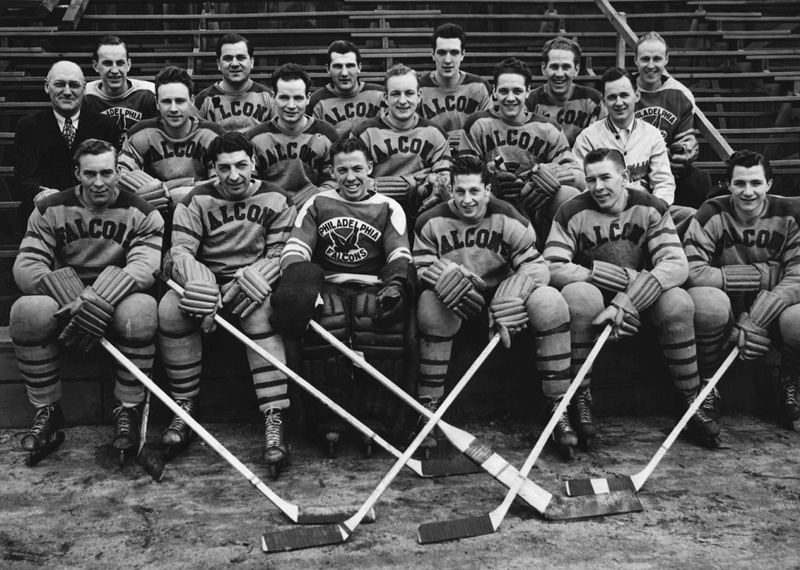
The 1942-43 Philadelphia Falcons
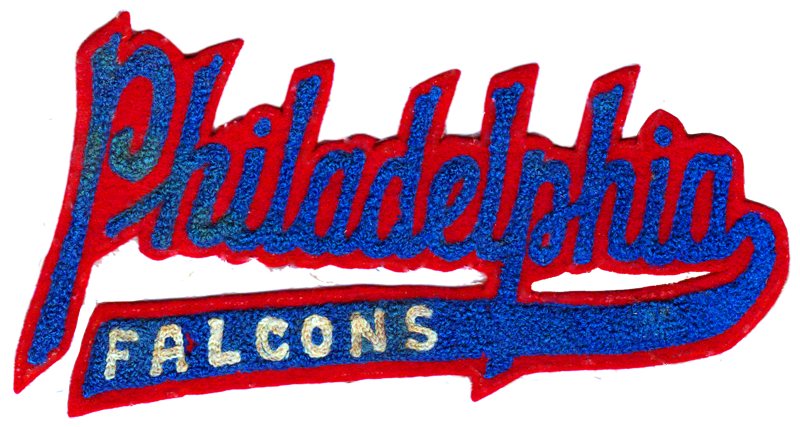
Philadlphia Falcons embroidered logo patch (1942)
(Photo and patch courtesy of Pierre Chenier Collection)
| The
Philadelphia Rockets |
(American
Hockey
League)
1946-49 |
Unfortunately for
Philadelphia's
second AHL entry, the Philadelphia Rockets, that club's debut season
would prove a virtual simulacrum of the late but unlamented NHL
Philadelphia Quakers' single desultory campaign some sixteen years
earlier. In fact the 1946-47 Rockets actually underachieved the
1930-31 Quakers in their inaugural season by winning just five times in
sixty-four outings (5-52-7) for a "winning" percentage of .133
(against the Quakers'.136) to set a "standard" for futility for
the AHL which still stands unchallenged over a half century later.
With just 17 points that
season --
also a still standing all time AHL record low -- the Rockets finished
their debut
campaign 67 points behind first place Hershey (84) in the Eastern
Division. However while the 46-47 Rockets were quite deservedly
establishing themselves as the worst team in the history of the AHL,
ironically the club also was also providing the city with its first AHL
scoring champion -- Rockets' player-coach Phil Hergesheimer.

The AHL's First Team All
Star right
wing that season, the then 32-year old Hergesheimer had spent parts of
four workmanlike but otherwise undistinguished seasons with the Chicago
Black Hawks prior to the War collecting just 21 goals in 125 career NHL
games. With the 1946-47 Rockets, however, Hergesheimer
contributed
to virtually half of all of the club's 188 goals as he potted the puck
48 times in 64 games while assisting on 44 other goals for a league
leading 92 points. Unfortunately for Hergesheimer, however, his
club also surrendered an incredible 400 goals to opposition marksmen --
a stunning average of 6.25 per game -- making one wonder just how the
Rockets had managed to win even the five games they actually did!
The 1947-48 season saw the
Rockets
improve considerably under the hand of their new coach, former Hershey
Bear star center Wally Kilrea. Five years earlier at the age of
34
Kilrea had won the AHL's 1942-43 scoring title as a Bear with 99
points. However as a 21-year old in 1930 ironically he had begun
his career as a member of that NHL "record setting" 1930-31
Philadelphia Quakers club that the 1946-47 Rockets had so closely
emulated.
(Kilrea then went on to considerable success playing for the New York
Americans, Ottawa Senators, Montreal Maroons, and Detroit Red Wings
with
whom he won Stanley Cups in both 1936 and 1937.)
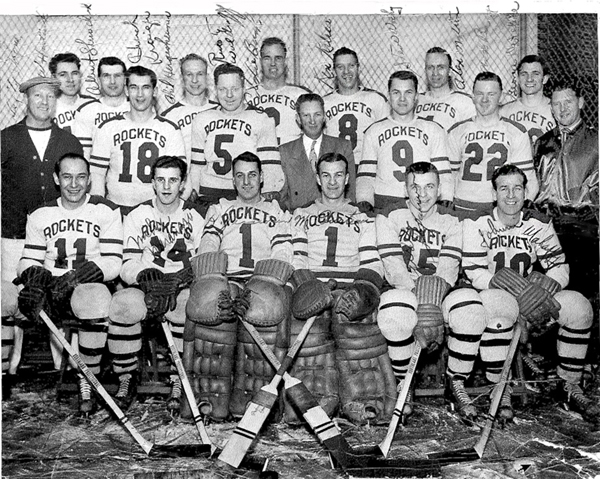 The 1948-49 Philadelphia Rockets
The 1948-49 Philadelphia Rockets
In memory of Edgar Nusbaum (1932-2009)
the Rockets stickboy
Although no longer doubling
as the
Rockets' coach, Phil Hergesheimer remained on as a player and earned
two
more All Star berths as Second Team right wing in both 1947-48 and
1948-49. High scoring Rockets' defenseman Eddie Bush -- who
himself
later coached in the AHL in Pittsburgh, Quebec, and Richmond -- also
earned All Star honors in 1947-48 while Wally Stefaniew led the league
in assists that year with 72.
While the Rockets improved
vastly in
their second season to a record of 22-41-5, that was only good enough
for fourth place in the Eastern Division (some fourteen points behind
third place Hershey) and left them out of the play-offs again. The
1948-49
season then saw the Rockets slip back again to 15-48-5, the second
worst
record in the eleven team circuit that year. After three seasons
the Rockets had won just 42 of the 200 games the team had played while
losing 141, tying just 17, and never making the play-offs. And
they would never get a chance to win another as Philadelphia's second
AHL entry folded in 1949 after just three seasons.
The Philadelphia Ramblers
(Eastern Hockey League)
1955-64
The only hockey action in
Philadelphia in the 1950's and early 1960's came from the Eastern
Hockey League's Philadelphia Falcons (1951-52) and Ramblers
(1955-64). 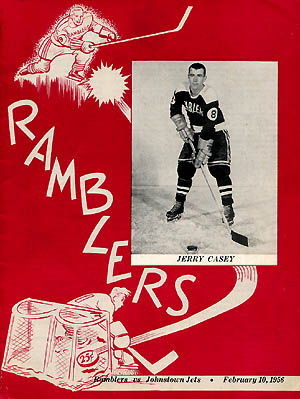 The EHL
Ramblers provided Philadelphia with a decade of entertaining but
otherwise undistinguished hockey until the team moved to just across
the Delaware River to nearby Cherry Hill, NJ,
after the 1963-64 season where they played in the Cherry Hill Arena as
the Jersey Devils. Among the notables to play for the Red shirted EHL
Ramblers was defenseman Ted Harris (1956-58) who would go on to win
multiple Calder Cup (Springfield, Cleveland) and Stanley Cup (Montreal,
Philadelphia) titles in his distinguished playing career which ended
back in Philadelphia almost twenty years later where he won his last of
ten championships with the 1974-75 Flyers. Other notable Ramblers were
high scoring left wing Doug Adam (who later also coached the team),
longtime Providence Reds', Boston Braves' and NHL Boston Bruins'
netminder Ross Brooks, legendary EHL badman John Brophy who later
coached the Toronto Maple Leafs (1986-89), blueliner Al "Junie" Fontana
who went on to a long career as an AHL linesman, and former star
Hershey Bear defenseman "Obie" O'Brien. The longest serving player on
the club was center Reggie Meserve who joined the Ramblers from the EHL
Washington Lions early in the 1955-56 season and remained with the
franchise for its entire run in Philadelphia and five more seasons in
New Jersey before retiring in 1969.
The EHL
Ramblers provided Philadelphia with a decade of entertaining but
otherwise undistinguished hockey until the team moved to just across
the Delaware River to nearby Cherry Hill, NJ,
after the 1963-64 season where they played in the Cherry Hill Arena as
the Jersey Devils. Among the notables to play for the Red shirted EHL
Ramblers was defenseman Ted Harris (1956-58) who would go on to win
multiple Calder Cup (Springfield, Cleveland) and Stanley Cup (Montreal,
Philadelphia) titles in his distinguished playing career which ended
back in Philadelphia almost twenty years later where he won his last of
ten championships with the 1974-75 Flyers. Other notable Ramblers were
high scoring left wing Doug Adam (who later also coached the team),
longtime Providence Reds', Boston Braves' and NHL Boston Bruins'
netminder Ross Brooks, legendary EHL badman John Brophy who later
coached the Toronto Maple Leafs (1986-89), blueliner Al "Junie" Fontana
who went on to a long career as an AHL linesman, and former star
Hershey Bear defenseman "Obie" O'Brien. The longest serving player on
the club was center Reggie Meserve who joined the Ramblers from the EHL
Washington Lions early in the 1955-56 season and remained with the
franchise for its entire run in Philadelphia and five more seasons in
New Jersey before retiring in 1969.
In 1967,
however,
hockey's longest and brightest era in the city began with the arrival
of
the expansion NHL Philadelphia Flyers and the construction of their
then state-of-the-art new arena, The Spectrum, at the south end of
Broad
Street. In contrast to Philadelphia's previous hockey failures,
remarkably it would take just seven short years for the city which
still owns the records for the fewest wins in a hockey season in two
leagues to become a virtual hockey mecca as the Flyers won the Stanley
Cup in both 1974 and 1975 -- and then defeated the Soviet Central Red
Army in 1976.
The Philadelphia
Firebirds
(North American Hockey League; American Hockey League)
1974-79
Lockhart Cup Champions (NAHL)
1975-76
Five years after the 1967 return of NHL hockey
to Philadelphia with the expansion Flyers, for the first time professional hockey also came to the city's classic 9,500-seat Convention Hall
(built 1929, demolished 2005) located at 34th Street and
Civic Center Boulevard in the University district of West Philadelphia and just a few dozen blocks to the Northwest of the Flyers' Spectrum lair.
With the advent in 1972 of the World Hockey Association and
the Philadelphia Blazers which the new "major league" counted among its
dozen charter member clubs, Philadelphia also again became the home of
two professional hockey clubs at the same time for the first time in
more than four decades. After just one season in Philadelphia, however,
in 1973 the Blazers moved on to Vancouver, but in 1974 the North
American Hockey League's expansion Philadelphia Firebirds took over the
vacant Civic Center ice to again give the increasingly hockey mad city
-- then also the new home of the Stanley Cup -- a second active
pro hockey franchise.
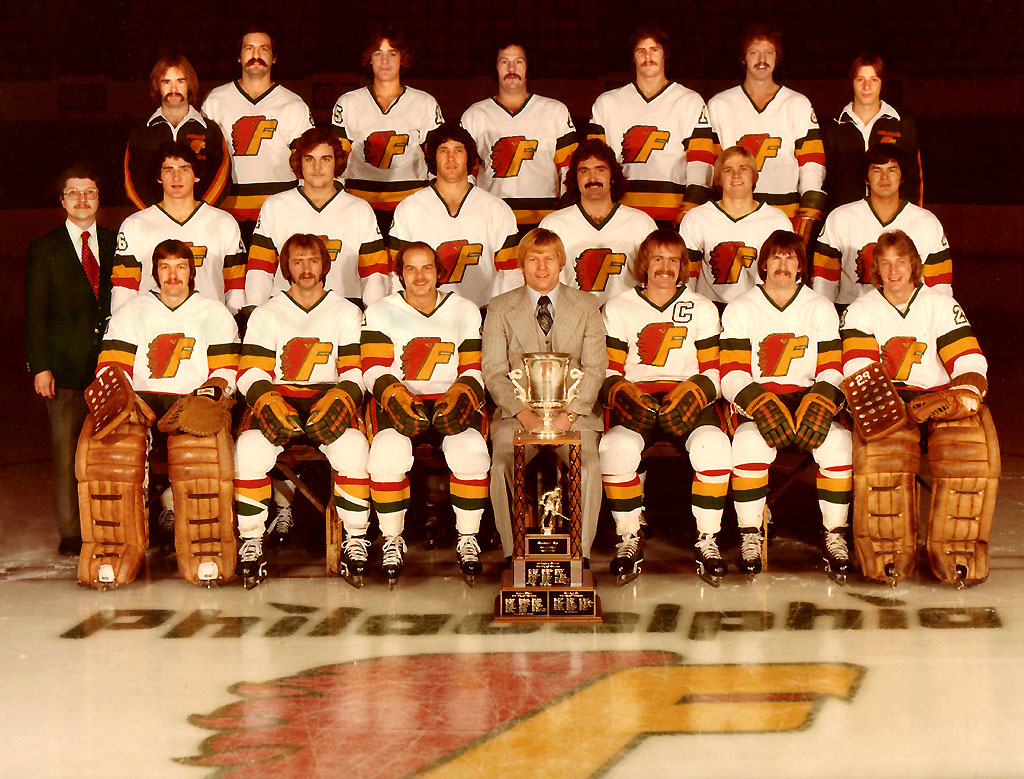
The 1976-77 NAHL Philadelphia Firebirds
(The author is at the left end of the second row)
Although playing at a level below that of the NHL or AHL, the
NAHL Firebirds developed a loyal following and in just their second
season they too brought Philadelphia another professional hockey title
-- its third in three years -- as the team captured the NAHL's Lockhart
Cup championship in 1976.
During its three NAHL seasons the
Firebirds were coached by the colorful and highly successful Gregg
Pilling,
and its top line featured three former NHL players -- left wing Randy
"Wizard" Osburn
(Toronto Maple Leafs), center Bobby
"B.C." Collyard
(St. Louis Blues), and right wing Gordie "Roadhog"
Brooks (St. Louis Blues, Washington Capitals).
Two NAHL Firebird players went on to be head coaches of NHL teams --
right wing Don
"Hayser" Hay (Phoenix Coyotes, Calgary Flames), and
goaltender Lorne "Mooner"
Molleken
(Chicago Blackhawks). (Both are currently coaching junior hockey in the WHL -- Hay as head coach of the 2006 WHL champion Vancouver Giants and Molleken as GM/Coach of the Saskatoon Blades.) Goaltender Reggie
Lemelin,
who played with the Firebirds during all five of their seasons in
Philadelphia in both the NAHL and AHL, went on to a highly successful
fifteen year NHL career with the Atlanta Flames, Calgary
Flames|, and Boston Bruins.
While hockey was
achieving great success in Philadelphia,
unfortunately the cost of doing business in the game was rising
precipitously with several more expansions of the NHL and added
competition for the services of both NHL and AHL players from the
WHA. Player salaries at all levels thus shot up dramatically, and
to compensate for this the NHL clubs began to cut way back on the
number
of players they kept under contract for development. Many players
under AHL contracts -- then also a source of WHA talent -- could also
demand much higher paychecks to stay, and thus within a period of but
three years from 1974 to 1977 the league fell from twelve teams to just
six. Making the AHL's situation even bleaker as the 1977-78
season
approached was the news that the Providence Reds -- the last surviving
uninterrupted franchise from 1936-37 -- had decided to cease
operations.
After forty years of
success, the AHL
thus appeared in danger of folding altogether in another year or two if
this dangerous downward trend were not reversed. As these clouds
appeared their darkest, however, two events -- both involving
Philadelphia -- helped reverse the trend in the Fall of 1977 and began
the league back to the great health it enjoys today. The first of
these was the decision of the Philadelphia Flyers to return to the
league as a team owner. The second, ironically, was the
unexpected
collapse of the North American Hockey League just weeks before the
start
of the 1977-78 season.
The Flyers new AHL
franchise became
the highly successful Maine Mariners which went on to bring the city of
Portland, Maine, Calder Cup titles in both its first and second seasons
of operation. (Since then that city has seen the Cup paraded
through its streets twice more by the Mariners in 1984 and the Pirates
in 1994.) The folding of the NAHL meanwhile left two of its
member
cities which wanted to continue to operate teams -- Philadelphia and
Binghamton, NY -- suddenly without a league to play in.
Binghamton solved its
problem by
acquiring and moving the Reds' franchise from Providence and joined the
league as the Binghamton Broome Dusters. The Firebirds acquired
an
expansion franchise as did the new John Brophy coached Hampton (VA)
Gulls, to boost the AHL to nine member clubs as the 1977-78 season
opened. (Hampton folded on February 10, 1978, but was replaced
the
next year by the New Brunswick Hawks.)
Danny Belisle -- who the
previous
year had guided the Syracuse Blazers to the NAHL's last Lockhart Cup
championship -- was named the new AHL club's coach and GM and quickly
went
about
acquiring players. The Detroit Red Wings supplied a number of
skaters from its CHL club in Kansas City including future Flyer coach
Terry Murray. To provide continuity and fan identification, a
number of the top players of the NAHL Firebirds were also retained
either by signing with the new club or being assigned by the NHL clubs
who then owned their contracts. Among those was right wing Gordie
Brooks and his long time center Bobby Collyard who had also played
together with the St. Louis Blues, Washington Capitals and AHL Richmond
Robins.
Reggie Lemelin was again provided by the Flyers and
later briefly by the Atlanta Flames (with whom he had signed in 1978) before going
on to a stellar 14-year NHL career with the Flames (in both Atlanta and Calgary) and Boston
Bruins. Lemelin later served as the goalie coach for both the
Flyers
and Phantoms between 1997 and 2009 .
The Firebirds first game
came at
Civic Center Convention Hall against the equally new Maine Mariners --
and surprisingly the 'Birds upset the far more talented Mariners.
Within a couple of weeks the Flyers made several deals to strengthen
the
Mariners including one with Detroit which brought Terry Murray back to
the Flyers' fold and put him on Maine's blueline where he won
consecutive Eddie Shore Plaques as the AHL's top defenseman and First
Team All Star while leading the Mariners to a pair of Calder Cup titles
in 1977-78 and 1978-79. The Firebirds nonetheless had stars of
their own with Lemelin, Brooks and defenseman Rick Wilson all earning
First Team All Star berths while Maine's Murray, center Blake Dunlop
and
left wing Al Hill filled out the league's top six.
Brooks also captured the
John B.
Sollenberger Trophy as the AHL's top scorer with 98 points while his 42
goals tied him with Springfield's Charlie Simmer. With a record
of
31-21-7 in a league-leading 60 games Reggie Lemelin beat out
Springfield's Mario Lessard -- his former junior teammate -- for most
wins while his 2.96 GAA was bested only by New Haven's Hardy Astrom and
Nova Scotia's Maurice Barrette. With a record of 35-35-11, the
Firebirds finished third in the Southern Division to become the first
Philadelphia-based AHL team to earn a play-off berth since the 1938-39
Ramblers, but they fell in the opening round, three-games-to-one, to
the
Parker MacDonald's powerhouse New Haven Nighthawks.
The Firebirds' turmoil
filled second
and final AHL season in Philadelphia proved to be far less kind to the
club. Although they were able to acquire a primary affiliation
with an NHL team, unfortunately it was with the talent poor Colorado
Rockies. The first crisis for the club came just days before the
season opened when the Washington Capitals fired coach Tommy McVie
after
an exhibition loss to the New England Whalers at Hersheypark Arena and
replaced him with Firebirds' coach Danny Belisle. While searching
for a replacement the club was coached temporarily by Colorado scout
Frank Mario, the Bears' leading scorer in 1946-47 and the league's top
play-off marksman on Hershey's first Calder Cup winning team that same
year. Mario was soon replaced by the colorful Armand "Bep"
Guidolin who had previously coached the AHL Boston Braves, NHL Boston
Bruins, and NHL Kansas City Scouts. (Just four years earlier, in
fact, Guidolin had been behind the Bruins' bench when they lost to the
Flyers in 1974 Stanley Cup finals.)
The Firebirds' roster in
1978-79 was
in constant flux with players coming and going with remarkable
regularity. Ironically among those was Bernie Parent's
original
Flyer goaltending mate, Doug Favell. Another player to who spent some time
with the club that year on loan from the WHA Cincinnati Stingers was rough-and-tumble left winger and future NHL referee Paul Stewart. 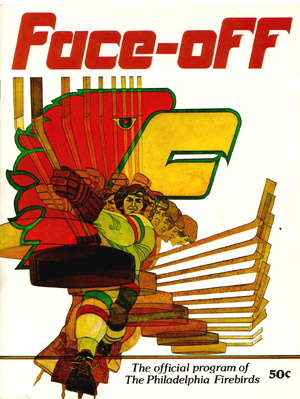 This led to a league-worst record of 23-49-8, decreasing attendance,
and
no play-off berth. Nonetheless the Firebirds did manage to earn a
place in AHL history that year albeit indirectly. Midway through
the season the Flyers' reassigned Mariner goalie Rick St. Croix to the
Firebirds in order to give Pete Peeters more playing time in
Maine. When All Star Flyer goalie Bernie Parent's career was
unexpectedly ended by a freak eye injury on February 17, 1979, however,
St. Croix was recalled to the Flyers briefly and then returned to the
Mariners as Peeters and Robbie Moore were also called upon to back up
Wayne Stephenson.
This led to a league-worst record of 23-49-8, decreasing attendance,
and
no play-off berth. Nonetheless the Firebirds did manage to earn a
place in AHL history that year albeit indirectly. Midway through
the season the Flyers' reassigned Mariner goalie Rick St. Croix to the
Firebirds in order to give Pete Peeters more playing time in
Maine. When All Star Flyer goalie Bernie Parent's career was
unexpectedly ended by a freak eye injury on February 17, 1979, however,
St. Croix was recalled to the Flyers briefly and then returned to the
Mariners as Peeters and Robbie Moore were also called upon to back up
Wayne Stephenson.
St. Croix's first game back
with
Maine was a win in Hershey but Bears' GM Frank Mathers checked the
rules
-- and then filed a protest -- because the AHL did not permit a player
to be reassigned within the league more than once in a single season
unless he had been traded to another organization. The appeal was
eventually upheld by league President Jack Butterfield, Maine's victory
was forfeited to the Bears, 1-0, and St. Croix was forced to return to
the Firebirds for the remainder of the season. So far as can be
determined, this remains the only such forfeit awarded after a game had
been completed in AHL history!
At season's end the
Firebirds pulled
up stakes in Philadelphia and moved on to Syracuse for one last
season. It would be another eighteen years before the AHL would
return to Philadelphia in its fourth -- and by far most successful --
incarnation with the arrival of the Philadelphia Phantoms in
1996.
Although the parent Flyers would now be developing its players in
Philadelphia for the first time, its strong connection to the AHL goes
back to before the Flyers even played their first game.
Among the first things that
the
nascent Flyer organization did after being awarded its NHL expansion
franchise in 1966 was to purchase an existing AHL club -- the Quebec
Aces -- to help develop the players who would go on to make the Flyers
one of the most successful organizations in the history of professional
sports. Over the next three decades the Flyers continued to groom
its future stars in the AHL with the Aces, Richmond Robins, Springfield
Indians, Maine Mariners, and finally with the Hershey Bears from 1984
to
1996. Three of those clubs -- the 1977-78 and 1978-79 Mariners
and
the 1987-88 Bears -- also went on to win Calder Cup titles.
The
Philadelphia
Phantoms
(American Hockey League)
1996-2009
Calder Cup Champions
1997-98
2004-05
While the Flyers'
affiliation with
the Bears had been a long and fruitful one, with the NHL club's
impending move to its new home, The CoreStates (later First Union, and
now Wachovia)
Center,
in 1996 new tenants would be needed to fill the hundred or so NHL and
NBA dates each year which would move from the Spectrum across the
parking lot to the new building. And so in December, 1995, the Flyers
purchased an
AHL
expansion franchise which would begin operation in the 1996-97
season. A few weeks later it was announced that the new team
would
be named the Philadelphia Phantoms and would be coached by Hall of Fame
former Flyer winger Bill Barber assisted by veteran ex-Bear and Flyer
defenseman Mike Stothers -- the same tandem then coaching Hershey.
The Phantoms played
their first
ever regular season game on October 4th, 1996, as they defeated former
Flyer Kevin McCarthy's Springfield Falcons, 6-3, in Springfield. After
suffered its first career setback the following night at the
hands of the Bears -- the team that Barber had coached and the majority
of the new Phantoms had played for the previous season -- at
Hersheypark Arena, 2-1. 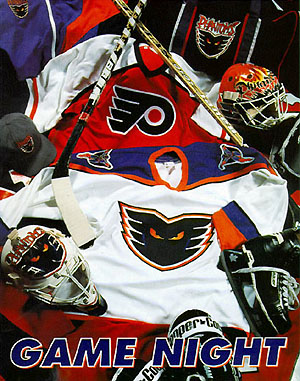 The club
then made its Spectrum debut the
following afternoon, Sunday, October 6th, before an enthusiastic crowd
of
9,166 which saw them defeat the visiting Rochester Americans, 3-1, in
the
first regular season AHL game played in Philadelphia since 1979. (Just
twenty six months later the Phantoms would welcome their 1,000,000th
regular season fan to the Spectrum.)
The club
then made its Spectrum debut the
following afternoon, Sunday, October 6th, before an enthusiastic crowd
of
9,166 which saw them defeat the visiting Rochester Americans, 3-1, in
the
first regular season AHL game played in Philadelphia since 1979. (Just
twenty six months later the Phantoms would welcome their 1,000,000th
regular season fan to the Spectrum.)
Although earning three wins
and a tie
at home in six October dates, the Phantoms also lost twice at the
Spectrum that month to Hershey and Syracuse. After falling to the
Crunch, 6-1, on October 20th, however, the club would not suffer
another
loss -- or tie -- on Spectrum ice for over three full months! A 5-5
deadlock with the Bears before a sold out house on January 31st finally
ended the Phantoms' home winning streak at a remarkable 19 to best by
two the then 59-year old AHL mark of 17 consecutive home victories set
by the Cleveland Barons in 1937-38. By season's end the Phantoms
had compiled a 49-18-3-10 record for a league best 111 points, ten more
than second overall Hershey's 101.
For the second time in his
AHL career,
Phantoms' center Peter White captured the Sollenberger Trophy as the
AHL's
top scorer with 105 points while center Vinnie Prospal finished fourth
overall in the league with 95 despite being called up to the Flyers
with
17 games left in the season! And as in 1938-39, Hershey and
Philadelphia dominated the All-Star Teams with defenseman Darren
Rumble,
left wing Patrik Juhlin and Prospal earning First Team honors along
with
White's Second Team berth.
After sweeping aside the
Baltimore
Bandits in three games in the opening round of the play-offs, the
Phantoms went on meet their arch rivals, the Hershey Bears. As in
the only previous Calder Cup meeting between Philadelphia and Hershey
in
1939, the set went the distance and as much resembled a war as it did
athletic competition. And as almost sixty years earlier, its
outcome was not decided until the final moments for the last possible
game. After being upset by the Bears in the first game at the
Spectrum, the Phantoms rebounded to even the series in game two in a
memorable fight filled 7-4 victory which featured a Calder Cup record
350 minutes in penalties -- and the appearance of no less than five
goalies in the game!
After the Phantoms
split the
next two in Hershey, Neil Little's 3-0 whitewash in game five on May
10th gave the Phantoms a 3-2 lead in games and the upper hand to take
the series in game six the next night in Hershey. In what would
prove to be the longest game ever played by a team in the Flyer
organization, however, that contest would not be decided until the
third
overtime when Hershey's Blair Atcheynum beat Little forty-two seconds
into the sixth period of the night to even the series once more.
Three nights later the Bears upset the Phantoms once again in game
seven, 3-2, to end Philadelphia's debut season.
As in their inaugural
season
the Phantoms again finished first overall in 1997-98 with 106 points on
a record of 47-23-2-10, and again Peter White took home the
Sollenberger
Trophy as the league's top scorer with another 105 point season.
As did Darren Rumble the year before, the Eddie Shore Award went to
Jamie Heward as the AHL's top blueliner while Craig Darby took First
Team All Star honors at right wing. Even more remarkable,
however,
was the response of the Philadelphia hockey fans to the Phantoms as
sell out crowds of 17,380 packed the Spectrum eight times during the
regular season schedule with a total season attendance of
472,392. Over 100,000 more attended Phantoms' home Calder Cup
games in Philadelphia that Spring.
After defeating the
Rochester
Americans in the opening round of the Calder Cup play-offs,
three-games-to-one, the Phantoms met the then defending Calder Cup
champion Hershey Bears for the second year in a row and avenged their
heart breaking seven-game loss to them of a year earlier with a
four-game sweep culminating with a 3-0 Neil Little road shutout.
The powerhouse Albany River Rats were Philadelphia's Western Conference
Finals opponent and they fell in six games with Little picking up two
more whitewashes on the road to send the Phantoms on to the Finals in
just their second season.
As expected the
championship
series against the Saint John Flames proved to be their toughest with
the first three games all going into overtime. Sean O'Brien's
goal
at 1:27 of the second overtime gave the Phantoms the first game, 3-2,
but the Flames evened the series with an 3-2 OT win of their own in
game
two. With a 4-3 OT win in game three and a 6-4 victory in game
four the Phantoms extended their road play-off winning streak to a
remarkable nine games before finally suffering their first -- and only
-- play-off road game loss as the Flames took game five, 6-1, to send
the series back to Philadelphia to be decided.
A crowd of 17,380 -- the
Phantoms'
ninth sell out of the year -- packed the Spectrum on the evening of
June
10th for game six and saw the Phantoms play a virtually flawless
contest
as they defeated the Flames handily, 6-1, behind the stellar
goaltending of Neil Little who had allowed just 48 post season goals on
his way to a 15-5 play-off record. 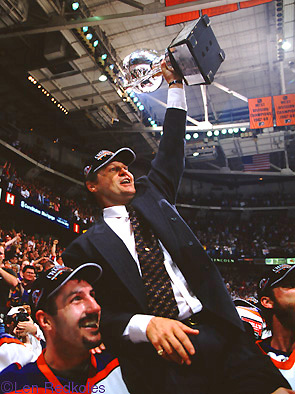 Winger
Mike Maneluk -- whom GM Bob Clarke had acquired early in the season
from Ottawa for One Dollar -- earned the Jack A. Butterfield Trophy as
the play-off MVP while also being the league's leading post season
scorer with 34 points on 13 goals and 21 assists. Maneluk's
scoring exploits were almost matched by Jim Montgomery (13-16-29) who
also notched a team leading five power play goals.
Winger
Mike Maneluk -- whom GM Bob Clarke had acquired early in the season
from Ottawa for One Dollar -- earned the Jack A. Butterfield Trophy as
the play-off MVP while also being the league's leading post season
scorer with 34 points on 13 goals and 21 assists. Maneluk's
scoring exploits were almost matched by Jim Montgomery (13-16-29) who
also notched a team leading five power play goals.
As the SRO Spectrum crowd
cheered,
Phantoms' captain John Stevens (who had also won Calder Cups with
Hershey and Springfield) and his mates paraded the Calder Cup around
the
same ice as the Flyers had skated their first Stanley Cup twenty-four
years earlier. And so almost sixty-two years after the first AHL
game had been played in Billy Penn's "Greene Countrie Towne" by
the Ramblers in November, 1936, the Calder Cup had finally come to
Philadelphia!
On October
10, 1998, the Phantoms raised their first-ever Calder Cup Championship
banner into the Spectrum rafters where it joined those of the Flyers'
many Conference Champion and two Stanley Cup banners from 1973-74 and
1974-75. Less than two months later the club welcomed the its
1,000,000th fan to become the fastest American Hockey League
franchise to draw one million fans in the league’s then 63-year
history. (More than three million fans have now passed through their
turnstiles.) The Phantoms also
hosted the 1999 AHL All-Star Game that season for which they supplied a
league-high seven players to represent the team in a spirited contest
played before a crowd of 14,120 at the then First Union (now Wachovia)
Center on January 24, 1999. Defenseman Sergei Klimentiev,
center Richard Park and goalie Jean-Marc Pelletier all skated for the
PlanetUSA team, while centers Peter White and Jim Montgomery joined
head coach Bill Barber and assistant coach Mike Stothers on the
Canadian squad for which White also served as captain. Pelletier won
the game’s MVP award with his outstanding period of work for PlantUSA
in their 5-4 win over Barber's Canadian squad.
The
Phantoms continued to draw fans through the turnstiles at a prodigious
rate as they drew a then-franchise attendance record when 19,532 at the
First Union Center on February 28th to see the Phantoms and the
Kentucky
Thoroughblades skate to a 3-3 draw.
With a capacity crowd of 17,380 at the Spectrum on April 11th to
watch the Phantoms conclude their home schedule against the Hershey
Bears, the club established an AHL-best overall single season
attendance record of 480,106, an average of 12,002 fans per game.
With head
coach Bill Barber's promotion to the Flyers as an assistant (and later
head) coach, assistant coach John Stevens
(who had been forced to retire as a player the previous season because
of a serious eye injury) became the new head coach of the Phantoms in
June, 2000. Stevens, the team's first captain, was soon joined by
former Flyer defenseman Kjell Samuelsson
and winger Don Nachbaur to complete the new staff. In November, 2003,
long-time NHL tough guy and former Flyer left wing Craig Berube signed
with the
Phantoms to finish his 18-year pro career back in Philadelphia as a
player/assistant coach and retired as a player at the end of the season
to become a
full-time assistant coach for the 2004-05 campaign replacing Nachbaur
who had since returned to the WHL as head coach of the Tri-City
Americans. While it may have only been a coincidence, not long after
signing Berube the Phantoms and Binghamton Senators combined for 373
penalty minutes in a 5-1 Sens' win at the Spectrum on December 28th, 2003, to establish new club records
for most PIM
(210), combined PIM, and even an individual team mark set by Peter Vandermeer with 44 PIM. After 11 fights
and 15 game misconducts, the game
is called with eight seconds remaining due to a lack of players on each
team.
The
Phantoms clinched the F.G. (Teddy) Oke Trophy as the AHL’s East
Division 2003-04 regular-season champion with a 0-0 tie in Bridgeport
on April 10th for its fourth division title and 13th shutout of the
season. (The previous franchise record for shutouts was just five.) The
following night the club ended the regular season by completing its
improbable 12-0 season sweep in games of the rival
Hershey Bears with a bizarre 3-2 overtime victory at the GIANT Center
in Hershey. Goalie Antero Niittymaki was
credited with the game-winner on a shorthanded, empty-net goal 2:32
into the extra session, making him the first-ever Phantom goaltender
to "score" a goal. (With the Bears needing two points in their final
games of the season to make the playoffs, Hershey coach Paul Fixter
pulled his goalie in overtime when the home team got a powerplay but
then the Bears inadvertently shot the puck into their own net when
their pointman missed a pass. Niittymaki was credited with the goal
because he was the last Phantom player to have touched the puck.) Over
the season Philadelphia had outscored Hershey, 47-14, in the 12
match-ups between the two clubs. But despite finishing the regular
season with 46 wins and 101 points, the Phantoms were upset in the
second round of the play-offs by the Wilkes Barre/Scranton Penguins, a
team that had finished the season 15 points behind them.
The
Phantoms' fate in the next year's play-offs would be a much different story, however.
 The 2004-2005
season would see
the now 70-year old Calder Cup return to Philadelphia for a second
time, and do so in record setting fashion. After dropping their first
two games of the season on the road, the
Phantoms posted a 5-3 victory over Hamilton in their home opener on
October 22nd which would prove to be the first win in an AHL-record
17-game win streak which they set with 3-1 victory in Hershey on
November 27th. On April 15th
Antero Niittymaki's 4-1 victory over Hershey also broke
the team record for most wins in a season as he registered his
32nd win to break veteran teammate Neil Little’s mark of 31 set in both
1996-97 and
1997-98.
While Niittymaki saw most of the playing time in the
season, veteran Phantom netminder Neil Little was still able
to make his mark as he became just the 10th
goaltender in AHL history to accumulate 200 wins when he shut out
the Bridgeport Sound Tigers on March 4 as the club
compiled a 16-7-1 record over the final two months of the regular
season to finish just one point behind the Jason Spezza led Binghamton
Senators for second place in the division.
The 2004-2005
season would see
the now 70-year old Calder Cup return to Philadelphia for a second
time, and do so in record setting fashion. After dropping their first
two games of the season on the road, the
Phantoms posted a 5-3 victory over Hamilton in their home opener on
October 22nd which would prove to be the first win in an AHL-record
17-game win streak which they set with 3-1 victory in Hershey on
November 27th. On April 15th
Antero Niittymaki's 4-1 victory over Hershey also broke
the team record for most wins in a season as he registered his
32nd win to break veteran teammate Neil Little’s mark of 31 set in both
1996-97 and
1997-98.
While Niittymaki saw most of the playing time in the
season, veteran Phantom netminder Neil Little was still able
to make his mark as he became just the 10th
goaltender in AHL history to accumulate 200 wins when he shut out
the Bridgeport Sound Tigers on March 4 as the club
compiled a 16-7-1 record over the final two months of the regular
season to finish just one point behind the Jason Spezza led Binghamton
Senators for second place in the division.
While
the Phantoms were already a very solid contender entering the play-off
run, the roster improved drastically with the addition of the Flyers'
two graduating 2003 first-round
draft picks -- the OHL Sault-Ste. Marie Greyhound's Jeff Carter (taken
11th overall) and OHL Kitchener Ranger's Mike Richards -- who each
joined the Phantoms as their junior clubs were eliminated from the
Memorial Cup playoffs.
Carter arrived in time for the final week of the regular season
schedule
and went on to lead the AHL in playoff scoring with 23 points (12-11)
in 21 games. Richards joined the club a game into the second round and
went on to collect 15 points (7-8) in 14
games.
As in 1998, the Phantoms' 2005 play-off run would be magical indeed. It
began against the Norfolk Admirals, a team that had defeated
Philadelphia in
six of their ten regular-season meetings including the last game of the
season played at the Spectrum on April 17th. While the Admirals put up
a good
fight and stretched the series to six games, Philadelphia clinched the
first round set with a 4-2 victory at the Wachovia Center located across the parking lot from the
Spectrum. (With the circus in the Spectrum for two weeks
as the play-offs began and no conflicting Flyers' post season dates at
the Center because of the lockout, the AHL club would end up playing
all 13 of its home Calder Cup games in the much larger NHL building.)
Next up were the Wilkes-Barre/Scranton
Penguins who had already upset the Binghamton Senators in their first
round set. After the Phantoms took the first two games at home and
split games three and four in Wilkes-Barre, the series returned to the
Center for one of the most memorable games in team history. Trailing
4-1 almost
midway through the third period of game five, the Phantoms exploded for
six
unanswered goals over the game's final ten minutes en route to a 7-4
victory and a berth in the Eastern
Conference Finals against the Providence Bruins whom the Phantoms
dispatched as well in six games with another victory at the Center
which also extended their post season home ice record to a perfect 11-0.
With
the
victory over Providence the Phantoms were back to the Calder Cup Finals
for the first time since 1998 where they would meet the Chicago Wolves,
another powerhouse
team that up until that point had breezed through the playoffs
including a sweep of the Manitoba Moose in the Western Conference
Finals. While both teams had plenty of scoring power, it was expected
to be a battle of two stellar Finnish-born goaltenders -- the Phantoms'
Niittymaki and the Chicago's Kari Lehtonen -- who had both been stellar
performers all
season long. Even though the Phantoms had finished the regular season
with 103 points on a record of 48-25-3-4, for the first time in the
2005 post season the Phantoms would have to open a series on the road
as Chicago had finished with 105 points (49-24-5-2) and had lost just
seven times at home all season.
As expected, the
first three games of the series were tight checking, low scoring
contests which featured stellar goaltending at both ends of the ice.
Niittymaki, however, who was just a little bit better than Lehtonen, his fellow Finn, earning a surprise 1-0
shutout victory in game one. He was even better in game two, however,
holding the high scoring Wolves to just one goal in a 2-1 double overtime victory to send the
series back to Philadelphia where the the next three games -- if
necessary -- would be played and Phantoms were already 11-0 in the
play-offs. Niittymaki again held the Wolves to just one goal as
the Phantoms defeated Chicago again, 2-1. Through almost eleven periods
of hockey over three games, Niittymaki had allowed the high scoring
Wolves (245 regular season goals) just two goals while Lehtonen and had
been solved for just five by the Phantoms, but that differential of
three goals was enough to give Philadelphia a 3-0 stranglehold on the
series going into game four on June 10th.
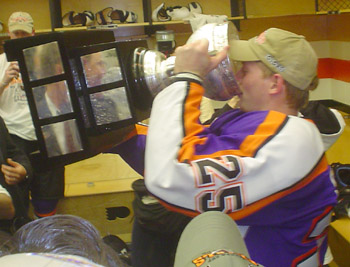 When
the puck was dropped for game four an AHL playoff-record crowd of
20,103 was in the seats wearing thousands of “Purple
Reign” t-shirts and hoping to see a Philadelphia professional hockey
team win a play-off title on home ice for just the fifth time in the
seventy-eight years since the CAHL Arrows first played a pro hockey
game in the city in 1927. And the Phantoms did not disappoint the SRO
crowd as they defeated the Wolves handily, 5-2, with future physician
Ben Stafford (left) -- who retired after the play-offs to go to medical
school -- collecting the Cup winning goal. Jeff Carter's 23 points
(12-11) earned him individual honors as the AHL's top scorer in
the play-offs and Niittymaki won the Jack Butterfield Award as the
Calder Cup MVP. After the Phantoms shook hands with the Wolves' players
at center ice AHL President Dave Andrews handed the Calder Cup to team
captain Boyd Kane who skated it around the ice to the cheers of more
than twenty thousand lucky hockey fans. Ironically exactly seven years
earlier to the day, Phantoms' coach John Stevens had received the same
Cup from the same hands a few hundred yards away at the Spectrum as
captain of the 1997-98 Phantoms.
When
the puck was dropped for game four an AHL playoff-record crowd of
20,103 was in the seats wearing thousands of “Purple
Reign” t-shirts and hoping to see a Philadelphia professional hockey
team win a play-off title on home ice for just the fifth time in the
seventy-eight years since the CAHL Arrows first played a pro hockey
game in the city in 1927. And the Phantoms did not disappoint the SRO
crowd as they defeated the Wolves handily, 5-2, with future physician
Ben Stafford (left) -- who retired after the play-offs to go to medical
school -- collecting the Cup winning goal. Jeff Carter's 23 points
(12-11) earned him individual honors as the AHL's top scorer in
the play-offs and Niittymaki won the Jack Butterfield Award as the
Calder Cup MVP. After the Phantoms shook hands with the Wolves' players
at center ice AHL President Dave Andrews handed the Calder Cup to team
captain Boyd Kane who skated it around the ice to the cheers of more
than twenty thousand lucky hockey fans. Ironically exactly seven years
earlier to the day, Phantoms' coach John Stevens had received the same
Cup from the same hands a few hundred yards away at the Spectrum as
captain of the 1997-98 Phantoms.
The 2004-05 Phantoms not only brought the Calder Cup back to
Philadelphia for a second time, more importantly for the parent Flyers
the club also sent a dozen members of its championship roster on to the
NHL in 2005-06. Eight players -- Antero Niittymaki, Jeff Carter, Mike
Richards, Partick Sharp, John Sim, Joni Pitkanen, Dennis Seidenberg,
and R.J. Umberger -- all saw regular service with the Orange &
Black in 2005-06 while Ben Eager, Randy Jones, Wade Skolney, and Ryan
Ready also were called up at one time or another during the season.
In 2008 it was announced that the venerable Spectrum would be closed
and demolished and thus the 2008-09 season would also be last for the
Phantoms in Philadelphia. It would not, however, be the end of the
Phantoms as a club or of their relationship with the Flyers, only a
change of venue. The club was sold by the Flyers to Jim and Rob Brooks
of Allentown, PA, and was moved temporarily to Glens Falls, NY where
they played for five years as the Adirondack Phantoms while the Brooks
brothers made plans for a new building to be constructed in Allentown.
The arena, the PPL Center, was completed in the late summer of 2014 and
the club, now called the Lehigh Valley Phantoms, played their first
official AHL regular season game in the new 8,578 seat rink on October
17, 2014 beating the club that replacd them in Galns Falls, the
Adirondack Flames, 4-3 in overtime.
When the ships in Gov. William Penn's "Welcome"
fleet dropped anchor in the Delaware River on October 28, 1682, not far from where the Spectrum and Center
now stand, none of the settlers who had just made the hard eight weeks' passage from Deal, England, to help populate Penn's new "Greene
Countrie Towne" had any idea what the Philadelphia they had come to
build there
would be like three centuries hence. What eventually grew from the labors they began, among
other things, was a hard working city populated by millions of proudly
"blue collar" sports fans.
Over the past eighty years these have been entertained by the exploits
of no fewer than ten pro
hockey teams which each have --
whether they be good or bad -- provided them with literally thousands
of
nights of exactly the kind of intense, hard nosed sports action that this city loves the most!
What more could they ever ask for?

As the scoreboard clock hit
"00.0" on the sultry late Spring evening of
June 10, 2005,
the AHL Phantoms -- and some 20,103 of their faithful -- began to celebrate
Philadelphia's second Calder Cup championship.
Thanks
to Paul Christman for information about the Comets.
©1974-2014 Scoop@HockeyScoop.net
Images by
DigitalImageServices.com
 Professional
ice hockey first came to
Philadelphia in the Fall of 1927 when the nascent Philadelphia Arrows
first took to the ice at the Philadelphia Arena
on Market Street between 45th & 46th Streets in West Philadelphia
to
become the sixth member of the then year old Canadian-American
("Can-Am") Hockey
League. (Originally known as the "Philadelphia
Auditorium and Ice Palace" when it first opened its
doors in February, 1920, the
5,000-seat Arena was all but supplanted as an indoor sports venue with
the opening of the Spectrum in South
Philadelphia in September, 1967, and was eventually destroyed by fire
on August 24, 1983.
Professional
ice hockey first came to
Philadelphia in the Fall of 1927 when the nascent Philadelphia Arrows
first took to the ice at the Philadelphia Arena
on Market Street between 45th & 46th Streets in West Philadelphia
to
become the sixth member of the then year old Canadian-American
("Can-Am") Hockey
League. (Originally known as the "Philadelphia
Auditorium and Ice Palace" when it first opened its
doors in February, 1920, the
5,000-seat Arena was all but supplanted as an indoor sports venue with
the opening of the Spectrum in South
Philadelphia in September, 1967, and was eventually destroyed by fire
on August 24, 1983.  The first formal
sporting event in the building was
a college hockey game played on Saturday,
February 14, 1920, in which Yale shut-out
Princeton, 4-0.) Although
the city's first pro hockey club
finished dead last that season with a 13-25-2
record,
by 1932-33
the Arrows had brought the city its first ever regular
season hockey title with an impressive 29-12-7
mark. (The 1933 Can-Am
play-off crown, however, went to the Boston
Cubs.) In 1935-36
the team was renamed the Ramblers when it
became
the top farm club of the New York Rangers (see below).
The first formal
sporting event in the building was
a college hockey game played on Saturday,
February 14, 1920, in which Yale shut-out
Princeton, 4-0.) Although
the city's first pro hockey club
finished dead last that season with a 13-25-2
record,
by 1932-33
the Arrows had brought the city its first ever regular
season hockey title with an impressive 29-12-7
mark. (The 1933 Can-Am
play-off crown, however, went to the Boston
Cubs.) In 1935-36
the team was renamed the Ramblers when it
became
the top farm club of the New York Rangers (see below).




 In
In  Unfortunately for the Rambler
faithful, however, Hershey's marksmen solved Bert Gardiner an
incredible
nine times on the evening with Wally Kilrea, Deed Klein, Windy Steele
and Jerry Shannon each scoring twice while Terry Reardon collected a
single unassisted marker.
Unfortunately for the Rambler
faithful, however, Hershey's marksmen solved Bert Gardiner an
incredible
nine times on the evening with Wally Kilrea, Deed Klein, Windy Steele
and Jerry Shannon each scoring twice while Terry Reardon collected a
single unassisted marker.  The
clubs'
final two regular season meetings of 1938-39 came in a much
anticipated late season home-and-home set which opened in Hershey on
March 9th and
closed in Philadelphia with a return engagement two nights later. While
each team would have three regular season games left with other
clubs after this final set, for all intents and purposes this
home-and-home match up would determine which of these two powerful
clubs
would finish with the best overall record in the league and therefore
get home ice in the crucial best-of-five play-off series that Hershey
and Philadelphia would open against each other less than two weeks
later.
The
clubs'
final two regular season meetings of 1938-39 came in a much
anticipated late season home-and-home set which opened in Hershey on
March 9th and
closed in Philadelphia with a return engagement two nights later. While
each team would have three regular season games left with other
clubs after this final set, for all intents and purposes this
home-and-home match up would determine which of these two powerful
clubs
would finish with the best overall record in the league and therefore
get home ice in the crucial best-of-five play-off series that Hershey
and Philadelphia would open against each other less than two weeks
later.  which
went to the Ramblers who were led to victory by rookie
Alf Pike who had just been assigned to the team with but two previous
games of pro experience to replace veteran George Allen who had been
called up to
the Rangers the day before. Pike, who took Allen's spot that night
on
Philadelphia's top line with Billy Carse and Bobby Kirk, responded by
netting a three goal hat trick in an impressive 6-3 Ramblers' win over
the Bears.
which
went to the Ramblers who were led to victory by rookie
Alf Pike who had just been assigned to the team with but two previous
games of pro experience to replace veteran George Allen who had been
called up to
the Rangers the day before. Pike, who took Allen's spot that night
on
Philadelphia's top line with Billy Carse and Bobby Kirk, responded by
netting a three goal hat trick in an impressive 6-3 Ramblers' win over
the Bears. 

 With the demise
of
the Ramblers, the only hockey in Philadelphia during the War years
was provided by the EAHL Philadelphia Falcons from 1942 to 1946.
With the demise
of
the Ramblers, the only hockey in Philadelphia during the War years
was provided by the EAHL Philadelphia Falcons from 1942 to 1946.




 This led to a league-worst record of 23-49-8, decreasing attendance,
and
no play-off berth. Nonetheless the Firebirds did manage to earn a
place in AHL history that year albeit indirectly. Midway through
the season the Flyers' reassigned Mariner goalie Rick St. Croix to the
Firebirds in order to give Pete Peeters more playing time in
Maine. When All Star Flyer goalie Bernie Parent's career was
unexpectedly ended by a freak eye injury on February 17, 1979, however,
St. Croix was recalled to the Flyers briefly and then returned to the
Mariners as Peeters and Robbie Moore were also called upon to back up
Wayne Stephenson.
This led to a league-worst record of 23-49-8, decreasing attendance,
and
no play-off berth. Nonetheless the Firebirds did manage to earn a
place in AHL history that year albeit indirectly. Midway through
the season the Flyers' reassigned Mariner goalie Rick St. Croix to the
Firebirds in order to give Pete Peeters more playing time in
Maine. When All Star Flyer goalie Bernie Parent's career was
unexpectedly ended by a freak eye injury on February 17, 1979, however,
St. Croix was recalled to the Flyers briefly and then returned to the
Mariners as Peeters and Robbie Moore were also called upon to back up
Wayne Stephenson.  The club
then made its Spectrum debut the
following afternoon, Sunday, October 6th, before an enthusiastic crowd
of
9,166 which saw them defeat the visiting Rochester Americans, 3-1, in
the
first regular season AHL game played in Philadelphia since 1979. (Just
twenty six months later the Phantoms would welcome their 1,000,000th
regular season fan to the Spectrum.)
The club
then made its Spectrum debut the
following afternoon, Sunday, October 6th, before an enthusiastic crowd
of
9,166 which saw them defeat the visiting Rochester Americans, 3-1, in
the
first regular season AHL game played in Philadelphia since 1979. (Just
twenty six months later the Phantoms would welcome their 1,000,000th
regular season fan to the Spectrum.)  Winger
Mike Maneluk -- whom GM Bob Clarke had acquired early in the season
from Ottawa for One Dollar -- earned the Jack A. Butterfield Trophy as
the play-off MVP while also being the league's leading post season
scorer with 34 points on 13 goals and 21 assists. Maneluk's
scoring exploits were almost matched by Jim Montgomery (13-16-29) who
also notched a team leading five power play goals.
Winger
Mike Maneluk -- whom GM Bob Clarke had acquired early in the season
from Ottawa for One Dollar -- earned the Jack A. Butterfield Trophy as
the play-off MVP while also being the league's leading post season
scorer with 34 points on 13 goals and 21 assists. Maneluk's
scoring exploits were almost matched by Jim Montgomery (13-16-29) who
also notched a team leading five power play goals.  The 2004-2005
season would see
the now 70-year old Calder Cup return to Philadelphia for a second
time, and do so in record setting fashion. After dropping their first
two games of the season on the road, the
Phantoms posted a 5-3 victory over Hamilton in their home opener on
October 22nd which would prove to be the first win in an AHL-record
17-game win streak which they set with 3-1 victory in Hershey on
November 27th. On April 15th
Antero Niittymaki's 4-1 victory over Hershey also broke
the team record for most wins in a season as he registered his
32nd win to break veteran teammate Neil Little’s mark of 31 set in both
1996-97 and
1997-98.
While Niittymaki saw most of the playing time in the
season, veteran Phantom netminder Neil Little was still able
to make his mark as he became just the 10th
goaltender in AHL history to accumulate 200 wins when he shut out
the Bridgeport Sound Tigers on March 4 as the club
compiled a 16-7-1 record over the final two months of the regular
season to finish just one point behind the Jason Spezza led Binghamton
Senators for second place in the division.
The 2004-2005
season would see
the now 70-year old Calder Cup return to Philadelphia for a second
time, and do so in record setting fashion. After dropping their first
two games of the season on the road, the
Phantoms posted a 5-3 victory over Hamilton in their home opener on
October 22nd which would prove to be the first win in an AHL-record
17-game win streak which they set with 3-1 victory in Hershey on
November 27th. On April 15th
Antero Niittymaki's 4-1 victory over Hershey also broke
the team record for most wins in a season as he registered his
32nd win to break veteran teammate Neil Little’s mark of 31 set in both
1996-97 and
1997-98.
While Niittymaki saw most of the playing time in the
season, veteran Phantom netminder Neil Little was still able
to make his mark as he became just the 10th
goaltender in AHL history to accumulate 200 wins when he shut out
the Bridgeport Sound Tigers on March 4 as the club
compiled a 16-7-1 record over the final two months of the regular
season to finish just one point behind the Jason Spezza led Binghamton
Senators for second place in the division. When
the puck was dropped for game four an AHL playoff-record crowd of
20,103 was in the seats wearing thousands of “Purple
Reign” t-shirts and hoping to see a Philadelphia professional hockey
team win a play-off title on home ice for just the fifth time in the
seventy-eight years since the CAHL Arrows first played a pro hockey
game in the city in 1927. And the Phantoms did not disappoint the SRO
crowd as they defeated the Wolves handily, 5-2, with future physician
Ben Stafford (left) -- who retired after the play-offs to go to medical
school -- collecting the Cup winning goal. Jeff Carter's 23 points
(12-11) earned him individual honors as the AHL's top scorer in
the play-offs and Niittymaki won the Jack Butterfield Award as the
Calder Cup MVP. After the Phantoms shook hands with the Wolves' players
at center ice AHL President Dave Andrews handed the Calder Cup to team
captain Boyd Kane who skated it around the ice to the cheers of more
than twenty thousand lucky hockey fans. Ironically exactly seven years
earlier to the day, Phantoms' coach John Stevens had received the same
Cup from the same hands a few hundred yards away at the Spectrum as
captain of the 1997-98 Phantoms.
When
the puck was dropped for game four an AHL playoff-record crowd of
20,103 was in the seats wearing thousands of “Purple
Reign” t-shirts and hoping to see a Philadelphia professional hockey
team win a play-off title on home ice for just the fifth time in the
seventy-eight years since the CAHL Arrows first played a pro hockey
game in the city in 1927. And the Phantoms did not disappoint the SRO
crowd as they defeated the Wolves handily, 5-2, with future physician
Ben Stafford (left) -- who retired after the play-offs to go to medical
school -- collecting the Cup winning goal. Jeff Carter's 23 points
(12-11) earned him individual honors as the AHL's top scorer in
the play-offs and Niittymaki won the Jack Butterfield Award as the
Calder Cup MVP. After the Phantoms shook hands with the Wolves' players
at center ice AHL President Dave Andrews handed the Calder Cup to team
captain Boyd Kane who skated it around the ice to the cheers of more
than twenty thousand lucky hockey fans. Ironically exactly seven years
earlier to the day, Phantoms' coach John Stevens had received the same
Cup from the same hands a few hundred yards away at the Spectrum as
captain of the 1997-98 Phantoms.